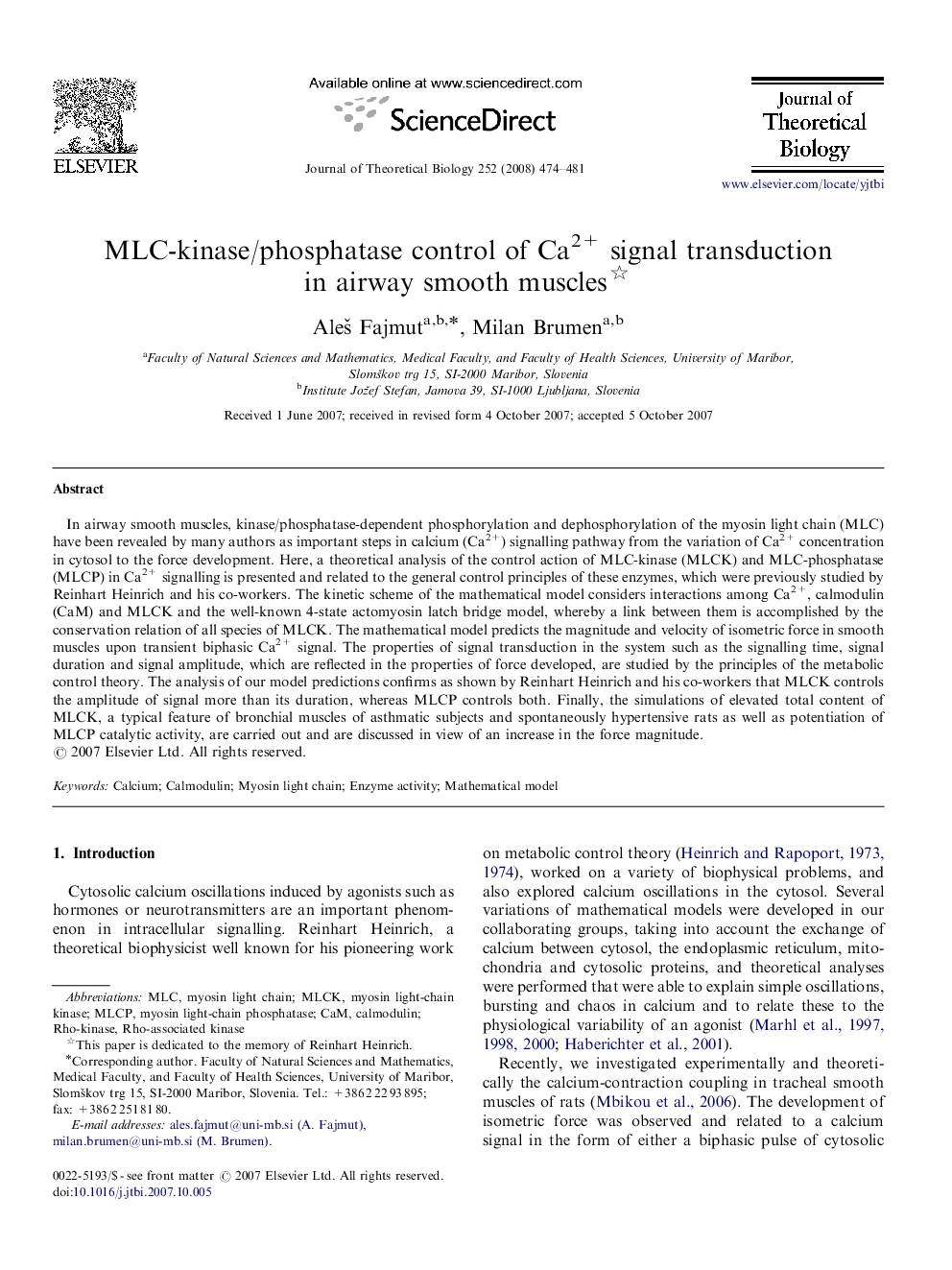| Article ID | Journal | Published Year | Pages | File Type |
|---|---|---|---|---|
| 4498574 | Journal of Theoretical Biology | 2008 | 8 Pages |
In airway smooth muscles, kinase/phosphatase-dependent phosphorylation and dephosphorylation of the myosin light chain (MLC) have been revealed by many authors as important steps in calcium (Ca2+) signalling pathway from the variation of Ca2+ concentration in cytosol to the force development. Here, a theoretical analysis of the control action of MLC-kinase (MLCK) and MLC-phosphatase (MLCP) in Ca2+ signalling is presented and related to the general control principles of these enzymes, which were previously studied by Reinhart Heinrich and his co-workers. The kinetic scheme of the mathematical model considers interactions among Ca2+, calmodulin (CaM) and MLCK and the well-known 4-state actomyosin latch bridge model, whereby a link between them is accomplished by the conservation relation of all species of MLCK. The mathematical model predicts the magnitude and velocity of isometric force in smooth muscles upon transient biphasic Ca2+ signal. The properties of signal transduction in the system such as the signalling time, signal duration and signal amplitude, which are reflected in the properties of force developed, are studied by the principles of the metabolic control theory. The analysis of our model predictions confirms as shown by Reinhart Heinrich and his co-workers that MLCK controls the amplitude of signal more than its duration, whereas MLCP controls both. Finally, the simulations of elevated total content of MLCK, a typical feature of bronchial muscles of asthmatic subjects and spontaneously hypertensive rats as well as potentiation of MLCP catalytic activity, are carried out and are discussed in view of an increase in the force magnitude.
